Ad Commercial (Ameture)
Add to My Profile
This commercial , though i directed, it's not officially mine. hope priya would not mind me in broadcasting this. one of the flicks of my UG memories. Eugene
28.10.07
22.10.07
Steps and Tips to write a good script
Steps;
1. Get your story straight. Come up with a specific idea of what you
want to happen in the play or movie. Create the premise and purpose of
that story. What are the circumstances and what are the goals of the
story and main characters involved?
2. Your characters will drive the action on the stage or screen, so
make sure you make them interesting and innovative. It may not be
necessary for you to develop all of the characters right away, but
some writers need to have everything set out before they can begin
working. Find your method and work with it.
3. Create an outline or treatment. Before you begin actually writing
dialogue and script, it might help to create a basic roadmap of what
will happen in your story. Sketch out a general plan and envision how
events will unfold. This should be told in the third-person.
4. Maintain your style. Remember, scripts are all about action and
dialogue. Make sure your characters speak realistically, and try not
to mix styles of speech and vocabulary too much unless you are going
for a certain effect.
5. Ensure that different characters have their own 'voice' based on
their background, which will affect their word choices and dialect.
This will stop your characters blending into one another.
6. Set the scene. Don't forget to include important details such as
time of day, setting, and actions of the characters in the scene.
These are nearly as important as the dialogue that occurs.
7. Format your writing. Skip lines between one character speaking and
a different one speaking, especially if you're handwriting it. This
will enable those reading the script to distinguish between speakers
more easily, and also allow space for notes.
8. Edit yourself. Continually revise your writing, and, if possible,
show the script to a friend or adviser who has writing experience and
can critique and improve the script as needed.
Tips:
• When you are ready, you may want to use one of the film industry's
online scouting services, to get your story and screenplay reviewed by
industry executives in a protected platform of exposure.
• Before pitching your screenplay, you'll want to get electronic
proof-of-creation. You can do this online.
• You also may want to invest in some sort of script writing program,
such as Final Draft. These programs format everything for you and all
you have to do is write!
• You may want to attend a scriptwriting class, which will give you
helpful hints on the nuances of writing a full script, especially
things such as plot development, character development, and dialogue.
• If you would like to have your script performed on stage or screen,
you will need to contact an agent who can help you send it to the
necessary people (producers and directors). It is often a long and
arduous process to get a script accepted, so be patient.
• If you think your script has real potential, be sure to get it
copyrighted so no producers can steal it and pass it off as their own.
• Try it with a friend so you can get a new perspective on the story.
They might have some ideas too.
collected by balu
source:www.wikihow.com
1. Get your story straight. Come up with a specific idea of what you
want to happen in the play or movie. Create the premise and purpose of
that story. What are the circumstances and what are the goals of the
story and main characters involved?
2. Your characters will drive the action on the stage or screen, so
make sure you make them interesting and innovative. It may not be
necessary for you to develop all of the characters right away, but
some writers need to have everything set out before they can begin
working. Find your method and work with it.
3. Create an outline or treatment. Before you begin actually writing
dialogue and script, it might help to create a basic roadmap of what
will happen in your story. Sketch out a general plan and envision how
events will unfold. This should be told in the third-person.
4. Maintain your style. Remember, scripts are all about action and
dialogue. Make sure your characters speak realistically, and try not
to mix styles of speech and vocabulary too much unless you are going
for a certain effect.
5. Ensure that different characters have their own 'voice' based on
their background, which will affect their word choices and dialect.
This will stop your characters blending into one another.
6. Set the scene. Don't forget to include important details such as
time of day, setting, and actions of the characters in the scene.
These are nearly as important as the dialogue that occurs.
7. Format your writing. Skip lines between one character speaking and
a different one speaking, especially if you're handwriting it. This
will enable those reading the script to distinguish between speakers
more easily, and also allow space for notes.
8. Edit yourself. Continually revise your writing, and, if possible,
show the script to a friend or adviser who has writing experience and
can critique and improve the script as needed.
Tips:
• When you are ready, you may want to use one of the film industry's
online scouting services, to get your story and screenplay reviewed by
industry executives in a protected platform of exposure.
• Before pitching your screenplay, you'll want to get electronic
proof-of-creation. You can do this online.
• You also may want to invest in some sort of script writing program,
such as Final Draft. These programs format everything for you and all
you have to do is write!
• You may want to attend a scriptwriting class, which will give you
helpful hints on the nuances of writing a full script, especially
things such as plot development, character development, and dialogue.
• If you would like to have your script performed on stage or screen,
you will need to contact an agent who can help you send it to the
necessary people (producers and directors). It is often a long and
arduous process to get a script accepted, so be patient.
• If you think your script has real potential, be sure to get it
copyrighted so no producers can steal it and pass it off as their own.
• Try it with a friend so you can get a new perspective on the story.
They might have some ideas too.
collected by balu
source:www.wikihow.com
KOLLYWOOD CINEMA HALLS
A visiting European exhibitor first screened a selection of silent
short films at the Victoria Public Hall in Madras. The films all
featured non-fictional subjects; they were mostly photographed records
of day-to-day events.
In Madras the Electric Theatre was established for the screening of
silent films. It was a favourite haunt of the British community in
Madras. The theatre was shut down after a few years. This building is
now part of the Post Office complex in Anna Salai. A Mr. Cohen built
Lyric Theatre in the Mount Road area (now Anna Salai).This venue
boasted a variety of events, including plays in English, Western
classical music concerts, and ballroom dances. Silent films were also
screened as an additional attraction. Samikannu Vincent, an employee
of the South Indian Railways in Trichy, purchased a film projector and
silent films from the Frenchman Du Pont and set up a business as film
exhibitor. He erected tents for screening films. His tent cinema
became popular and he travelled all over the state with his mobile
unit. In later years, he produced talkies and also built a cinema in
Coimbatore.
To celebrate the event of King George V's visit in 1909, a grand
exhibition was organised in Madras. Its major attraction was the
screening of short films accompanied by sound. A British company
imported a Crone megaphone, made up of a film projector to which a
gramophone with a disc containing prerecorded sound was linked, and
both were run in unison, producing picture and sound simultaneously.
However, there was no synched dialogue. Raghupathy Venkiah Naidu, a
successful photographer, took over the equipment after the exhibition
and set up a tent cinema near the Madras High Court. R. Venkiah, flush
with funds, built in 1912 a permanent cinema in the Mount Road area
named Gaiety. It was the first in Madras to screen films on a
full-time basis. This theatre is still functioning, although under
different ownership.
In tent cinemas, there were usually three classes of tickets: the
floor, bench and, chair. The floor-ticket purchaser sat on sand to
watch the movie, but he enjoyed certain advantages that other patrons
did not. He could sit as he pleased, or he could turn over and take a
short nap when the narrative was particularly dull and roll back again
when the action was again to his liking—luxuries in which the upper
class could never indulge.
CHENNAI HALLS :
There are about 2,400 cinema halls in Tamilnadu, which is the main
market for Tamil film industry. Of these around 125 are located in the
Chennai district. Below is a list of the most prominent exhibitors in
the box office.
Sathyam - 1,266 seats (Chennai )
Albert - 1,225 seats (Chennai)
Devi - 1,212 seats (Chennai)
Melody - 998 seats (Chennai)
Abirami - 927 seats (Chennai)
Kasi - 917 seats (Chennai)
Sangam - 877 seats (Chennai)
Maharani - 733 seats (Chennai)
Udhayam - 700 seats (Chennai)
Santham - 567 seats (Chennai)
Padmam - 540 seats (Chennai)
Suriyan - 480 seats (Chennai)
Devi Bala - 369 seats (Chennai)
Subham - 306 seats (Chennai)
Mayajaal - 178 seats (Chennai)
INDUSTRIAL TRENDS:
Average annual film output in Tamil film industry has risen steadily
in the 20th century.
• 1930s—22.5 releases per year on average
• 1940s—22.1 releases per year on average
• 1950s—32.6 releases per year on average
• 1960s—43.0 releases per year on average
• 1970s—62.5 releases per year on average
• 1980s—104.6 releases per year on average
• 1990s—101.2 releases per year on average
collected and posted by Thomas
source:www.en.wikipedia.org
short films at the Victoria Public Hall in Madras. The films all
featured non-fictional subjects; they were mostly photographed records
of day-to-day events.
In Madras the Electric Theatre was established for the screening of
silent films. It was a favourite haunt of the British community in
Madras. The theatre was shut down after a few years. This building is
now part of the Post Office complex in Anna Salai. A Mr. Cohen built
Lyric Theatre in the Mount Road area (now Anna Salai).This venue
boasted a variety of events, including plays in English, Western
classical music concerts, and ballroom dances. Silent films were also
screened as an additional attraction. Samikannu Vincent, an employee
of the South Indian Railways in Trichy, purchased a film projector and
silent films from the Frenchman Du Pont and set up a business as film
exhibitor. He erected tents for screening films. His tent cinema
became popular and he travelled all over the state with his mobile
unit. In later years, he produced talkies and also built a cinema in
Coimbatore.
To celebrate the event of King George V's visit in 1909, a grand
exhibition was organised in Madras. Its major attraction was the
screening of short films accompanied by sound. A British company
imported a Crone megaphone, made up of a film projector to which a
gramophone with a disc containing prerecorded sound was linked, and
both were run in unison, producing picture and sound simultaneously.
However, there was no synched dialogue. Raghupathy Venkiah Naidu, a
successful photographer, took over the equipment after the exhibition
and set up a tent cinema near the Madras High Court. R. Venkiah, flush
with funds, built in 1912 a permanent cinema in the Mount Road area
named Gaiety. It was the first in Madras to screen films on a
full-time basis. This theatre is still functioning, although under
different ownership.
In tent cinemas, there were usually three classes of tickets: the
floor, bench and, chair. The floor-ticket purchaser sat on sand to
watch the movie, but he enjoyed certain advantages that other patrons
did not. He could sit as he pleased, or he could turn over and take a
short nap when the narrative was particularly dull and roll back again
when the action was again to his liking—luxuries in which the upper
class could never indulge.
CHENNAI HALLS :
There are about 2,400 cinema halls in Tamilnadu, which is the main
market for Tamil film industry. Of these around 125 are located in the
Chennai district. Below is a list of the most prominent exhibitors in
the box office.
Sathyam - 1,266 seats (Chennai )
Albert - 1,225 seats (Chennai)
Devi - 1,212 seats (Chennai)
Melody - 998 seats (Chennai)
Abirami - 927 seats (Chennai)
Kasi - 917 seats (Chennai)
Sangam - 877 seats (Chennai)
Maharani - 733 seats (Chennai)
Udhayam - 700 seats (Chennai)
Santham - 567 seats (Chennai)
Padmam - 540 seats (Chennai)
Suriyan - 480 seats (Chennai)
Devi Bala - 369 seats (Chennai)
Subham - 306 seats (Chennai)
Mayajaal - 178 seats (Chennai)
INDUSTRIAL TRENDS:
Average annual film output in Tamil film industry has risen steadily
in the 20th century.
• 1930s—22.5 releases per year on average
• 1940s—22.1 releases per year on average
• 1950s—32.6 releases per year on average
• 1960s—43.0 releases per year on average
• 1970s—62.5 releases per year on average
• 1980s—104.6 releases per year on average
• 1990s—101.2 releases per year on average
collected and posted by Thomas
source:www.en.wikipedia.org
14.10.07
Fan’s Role - Rajkumar
When the people are able to associate with the artist they become fan. These fans get a varied emotional level with the artist to whom they associate. Fans in India, particularly in the south India, goes to the extreme level of dying for the artist or spending huge sum of money on the artist unnecessarily, from placing banners to milk abishagam etc.This doesn’t stop with here, then there comes the street fight between the two different fan clubs, ends up in the police station. This makes his whole life spending completely for the artist or celebrity. Spoiling their entire life.
A good Fan has to take the role of the critic, not only praise him but also should spot him when he does a mistake. Fan’s club can be encouraging but what role does it play in the society . It is now like, “for the artist, to the artist, by the artist”. In present situation, even he might forget his own parents or friends birthday, but he will never forget his Artist (leader)’s birthday. This will go up to an extend of spending thousands and thousands of his parents money, just to get the pep in the crowd.
To conclude this, I would like to say. There may be thousands of fans like you but you are the only one for your family. Be a fan, don’t get obsessed to it.
A good Fan has to take the role of the critic, not only praise him but also should spot him when he does a mistake. Fan’s club can be encouraging but what role does it play in the society . It is now like, “for the artist, to the artist, by the artist”. In present situation, even he might forget his own parents or friends birthday, but he will never forget his Artist (leader)’s birthday. This will go up to an extend of spending thousands and thousands of his parents money, just to get the pep in the crowd.
To conclude this, I would like to say. There may be thousands of fans like you but you are the only one for your family. Be a fan, don’t get obsessed to it.
9.10.07
8.10.07
"your tickets meaning here"

Before you consulting these definitions of what the color in your dreams signifies, first consider your own personal and special associations with the color. Does the color remind you of a particular person, a body part, a childhood toy, or some object. For example, the color yellow may remind you of the childhood school bus you rode in or the yellow house you grew up in. However, below are common associations of various colors to get you started.
Beige-Beige represents the basics, the essentials and the barest form. It may also indicate your neutral or unbiased position.
Black-Black symbolizes the unknown, unconscious, danger, mystery, darkness, death, mourning, hate or malice. If the feeling in the dream is one of joy, blackness could imply hidden spirituality and divine qualities.To dream in black and white, suggests that you need to be more objective in formulating your decisions. You may be a little too unyielding in your thought process and thus need to find some sort of balance between two opposing views. Consider the views and opinions of others. Alternatively, black and white dreams is a sign of depression or sadness. You may feel that there is not enough excitement in your life.
Blue-Blue represents truth, wisdom, heaven, eternity, devotion, tranquility, loyalty and openness. The presence of this color in your dream, may symbolize your spiritual guide and your optimism of the future. You have clarity of mind.Depending on the context of your dream, the color blue may also be a metaphor of "being blue" and feeling sad.
Brown-Brown denotes worldliness, practicality, domestic and physical comfort, conservatism, and a materialistic character. Brown also represents the ground and earth.
Burgundy-To see the color burgundy in your dream, symbolizes wealth, success, and prosperity. It is indicative of your potential power.
Fuchsia-The color fuchsia represents your connection to your spirituality and meditation. You are letting go of old attitudes and ready for change. This color is also associated with emotional stability.
Gold-The golden color reflects your spiritual rewards, richness, refinement and enhancement of your surroundings.
Green-Green signifies a positive change, good health, growth, healing, hope, vigor, vitality, peace, and serenity. Green is also symbolic of your strive to gain recognition and establish your independence. Money, wealth and jealousy are often associated with this color.
Dark green- indicates materialism, cheating, deceit, and/or difficulties with sharing. You need to balance between your masculine and feminine attributes.
Gray-Gray indicates fear, fright, depression, ill health, ambivalence and confusion. You may feel emotionally distant or detached.
Hot Pink-The appearance of hot pink color in your dream, represents sex and lust.
Indigo-Indigo implies spirituality and divine protection. It may also mean deceit.
Maroon-The color maroon is symbolic of courage, bravery, heroism, and strength.
Olive Green-The olive green color symbolizes natural wisdom and Zen. You need to achieve peace in your environment.
Orange-Orange denotes friendliness, courtesy, lively, sociability, and an out-going nature. You may want to expand your horizons and look into new interests.
Peach-Peach is the color of innocent love intermixed with wisdom.
Pink-Pink represents love, joy, sweetness, happiness, affection, kindness. Being in love or healing through love is also implied with this color.
Purple-Purple is indicative of devotion, healing abilities, loving, kindness, and compassion. It is also the color of royalty, high rank, and dignity.
Red-Red is an indication of raw energy, force, vigor, intense passion, aggression, power, courage and passion. The color red has deep emotional and spiritual connotations.Red is also the color of danger, shame, sexual impulses and urges. Perhaps you need to stop and think about your actions.
Silver-silver represents justice and purity. It is symbolic of some protective energy.
Teal-The color teal signifies trustworthiness, devotion and healing. It is also indicative of spiritual guidance and teacher.
Turquoise-Turquoise is symbolic of healing power and natural energy. It is often associated with the sun, fire, and male power.
Violet-Violet denotes high spirituality, religious aspiration, purification, affection, gentleness, charm, and peacefulness. There is a sense of intuitive understanding and a feeling of intimacy.
White-White represents purity, perfection, peace, innocence, dignity, cleanliness, awareness, and new beginnings. You may be experiencing a reawakening or have a fresh outlook on life. However, in Eastern cultures, white is associated with death and mourning.
Yellow-The color yellow has both positive and negative connotations. If the dream is a pleasant one, then the color yellow is symbolic of intellect, energy, agility, happiness, harmony, and wisdom. On the other hand, if the dream is an unpleasant one, then the color represents cowardice and sickness. You may have a fear or an inability to make a decision or take action. As a result, you are experiencing many setbacks.
collected By Jijo James
courtesy: www.dreammoods.com
7.10.07
My Photo Album "Prasanna"
Subscribe to:
Posts (Atom)

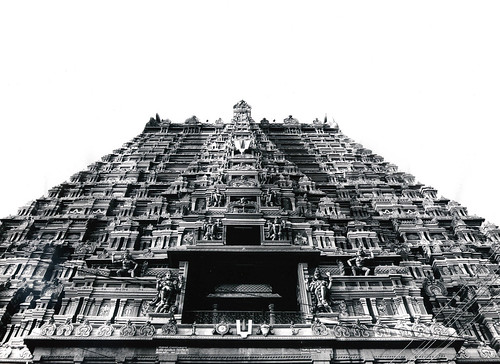

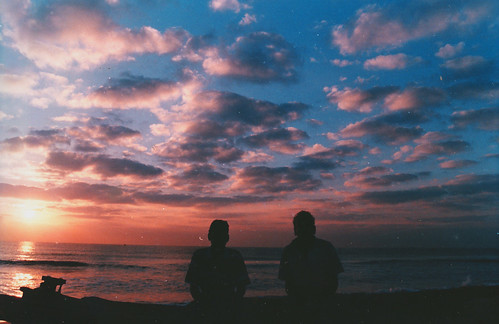



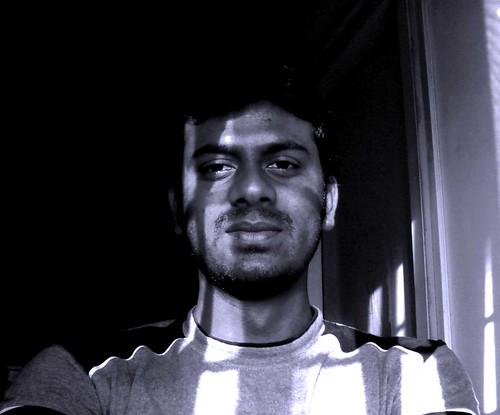








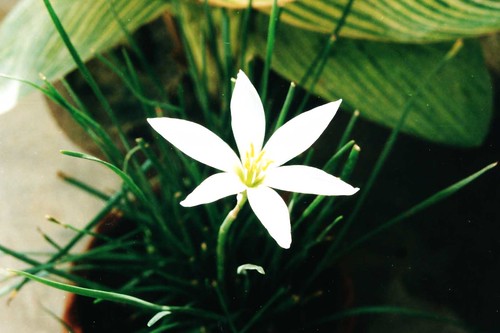



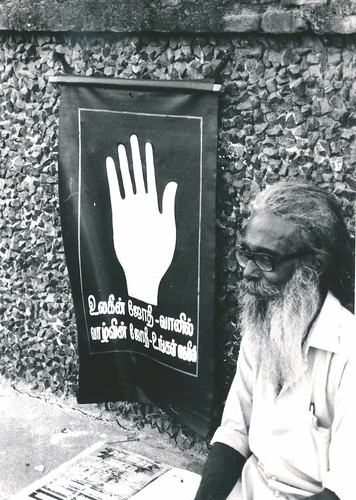






.jpg)
